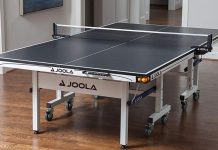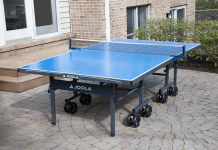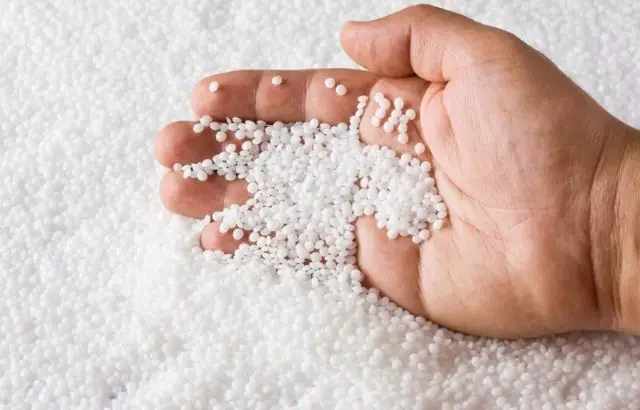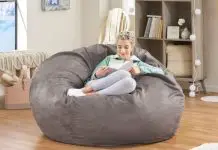Some staff sat on bags full of Styrofoam during their coffee and cigarette breaks. The content inside them varies depending on the type of product we want to use for its production. These products can be made out of fabric, leather, suede, corduroy, or even synthetic fur in some cases. The curiosity to know what is bean bags filled with has raised many questions.
In this article, we will discuss the types of bean bags and what they are packed with. Please read on!
Table of Contents
What is a Bean Bag?
A bean bag is a closed bag including PVC tablets, dried beans, expanded polystyrene, or expanded polypropylene. It is a large bag of beaded fabric. The beads or dried seeds are as follows.
The Microbeads
Micro-beads were utilized in specific bean bags filling types, such as neck pillows and pillows, but they are not appropriate for hefty bean bags and furniture. It consists of small pellets made of a type of plastic known as polyethene. They range in size from 10 m to 1 mm.
For some years, micro-beads have been generally used for various cosmetic products, including liquid soaps and lotions. These small beads are exceptionally simple, and their roundness allows them to be easily applied while adding aesthetic appeal to the products they contain.
However, some cities and one state, Illinois, have banned the sale of anything with micro-beads. This is after those great lakes are found in very lofty concentrations as they can be an environmental hazard.
The EPP Beads
Expanded polypropylene (EPP) is another thermoplastic polymer used to fill bean bags, but it is not used in the U.S. This is more popular in Asia than in Europe. EPP beads have many advantages over EPS beads and other bean bag filling alternative. EPP foam is incredibly resilient despite being very strong and durable. When crushed or rolled out of shape, the material quickly returns to its original form and size.
This means that the beads can be compressed without losing their ventilated, cushioning qualities. There are many other benefits of EPP beads. They do not lose their volume as fast as EPS beads. And they don’t have as strong a smell. This refill is 100 percent recyclable after use.
The primary problem with EPP structures is that they are very sensitive to fire and burning. And EPP also demeans once exposed to oxygen. EPP is popular in many other applications, including plastic furniture and living durable plastic lids.
The Compressed foam
One of the best materials for bean bags to use is foam compressed. This is also known as memory foam. People who buy memory foam bean bags have given them very favorable reviews, and the popularity of these products is expected to increase in the next few years.
Memory foam is a type of polyurethane made by a unique process to increase its density and viscosity. For this reason, it is also called viscoelastic foam and low-elastic polyurethane (LRPU) foam. The foam was invented for NASA in 1966 but is now a popular material for pillows and cushions.
Memory foam is an ideal complement to your vintage ottoman. Memory Foam is made in the USA and is 100% Certipur-US Certified.
The memory foam bean bag is easy to transport. This is because they can shrink to about a quarter of the size of their comfort during shipping. When used for bean bags, this material can be found cheaply in the form of cactus. However, because memory foam pieces are large and irregularly shaped, some people do not like their composition when used in thin-lined bean bags.
The material is best used with leather or 1680D polyester.
The EPS beads
Most bean bags are filled with a man-made material called expanded polystyrene (EPS). EPS It is a hard sell plastic similar to Styrofoam, which extruded polystyrene is. In addition to bean bag beads, EPS is used for disposable coffee cups and cushioning material for packaging and shipping. EPS is 98 percent air.
The EPS is appropriate for mainly inexpensive bean bag chairs as it is insubstantial but severe enough to maintain its form for many years. EPS is 98 percent air. The EPS beads used for the bean bag filler are 3mm to 5mm in diameter. The EPS structure is resistant to moisture and heat.
The MegaHaltimax pack is packed with beans made from 100% virgin polystyrene.
Although EPS is not biodegradable, it can be reused and reused in many ways. After replacing the nests, they can be packaged and sold or delivered to a regional recycling center. However, many people keep old beads for clay fillers for other craft projects or potted plants.
Lightweight rigid that lasts for a few years of use contains 98% air Resistant to heat and moisture. Most bean bags are filled with an EPS structure ranging in size from three to five millimeters, and you can easily buy these bean replacements bags.
When you need a replacement structure, it is recommended to use virgin beads instead of recycled beads. Such recycled beads can have a short useful lifetime. EPS structures are 98% airtight, and when in a bean bag, they are 3-5 mm in diameter.
Beans, rice, and natural stuffing
Bean bags have been around a lot longer than plastic, and they haven’t found a reason for that. At one time, bags of beans were filled with dried beans or other dried grains such as rice or corn. In recent years, this type of filler has experienced resurgence in popularity as people are looking for natural fillers instead of man-made fillers.
One of the most popular natural bean bags filling is the buckwheat halo. The hull is rigid, but when used inside a thick lining, it can be very comfortable.
Other fillers
The buckwheat hull with beans falls into other bean bag filling options, such as sand and small gravel that can be used with stretchable fabric. These products can then be heated on the stovetop, in the oven, or microwave and used for therapeutic purposes.
Other ingredients that work well in do-it-yourself (DIY) pads include dried cherry pits, rice, and wheat. They are made with 100% virgin polystyrene beans, the size of a large pea.
A favorite game for kids and outdoor parties is bean bag t-bag. The small bean bags used for this game are filled with various materials such as dry grain or sand.
Types of Bean Bag Filling
Polystyrene beads
This small foam bead easily shifts and moves, giving the bean-bag its signature, body-hugging comfort. Recycled beads are also available; this type of bean bag filler is made from polystyrene more than other manufacturing processes. It is rearranged so that it looks like a virgin wreath but usually costs less, and it saves factory waste from ending up in landfills.
Slip foam stuffing
It is usually made from polyurethane foam, similar to the foam used in beds and chairs. The foam is cut into small pieces and bounce into shape after it is squeezed, which means your bean bag doesn’t need to be refilled many times. Keep in mind that natural, food-based fillings can attract pests and require additional protection against moisture damage.
This filling can be too heavy for bean bag chairs, but you still have a green option: recycle your household items. Styrofoam packing peanuts, cut-up foam mattress toppers, and extra plastic grocery bags can also be used to move your flattened bean bag chair forward. A simple glimpse of your home or surroundings will probably highlight many other materials that can be recycled for use in your chair, saving your money while protecting the environment.
Read More: How to Clean a Bean Bag
What is Bean Bags Filled with: FAQs?
Is the bean bag toxic?
Few people and organizations claim that filling expanded polystyrene (EPS) bean bags can be toxic or carcinogenic to humans. Still, according to many officials, the U.S. Centers for Disease Control (CDC) and the Environmental Protection Agency (EPA), bean bag general, the filling is completely safe under customer use.
What is a bean bag cover without beans?
A bean bag is capable of being filled with polystyrene beans, and it’s capable of being filled with air. It also means that a bean bag without beans is just a cover of a bean bag. Bean bags with beans, on the other hand, come with polystyrene beans stuffed from the inside.
What do you fill a small bean bag with?
Not all bean bags are full of beans; many things can be used as a filling. Some examples include feed corn, rice, sand, dried beads, lavender.
Conclusion
It doesn’t matter which bean bag filler you use, but it is important to remember that any small, lightweight items such as the beads described above pose a risk to children if they breathe or swallow. However, it is up to you to ensure that all bean bags are properly sealed before use. Bean bags, especially cotton bean bags, can cause a fire hazard.
Make sure to keep your bean bag away from naked flames and open fire at all times.

Veronica is a Green Bay-based freelance writer and editor with extensive experience with board games. When not busy scribbling her thoughts, you might find her in her garden, hiking out in the woods, or exploring new food joints.
Veronica is a die-hard board game and chess hobbyist by night. She likes to try out new games and is always on the lookout to recruit new players for her game night (so beware!). When not playing board games or throwing darts, she is usually busy painting miniatures (or doing other nerdy stuff).
She is the CEO & Content Writer of Indoor Games Zone. She shares her expertise from years of playing chess, board games, and darts.

![Stiga XTR Pro Review | 1,559+ Global Ratings (In-Depth Guide) [year] Stiga XTR Pro Review](https://indoorgameszone.com/wp-content/uploads/2021/08/Stiga-XTR-Pro-Review-218x150.jpg)





